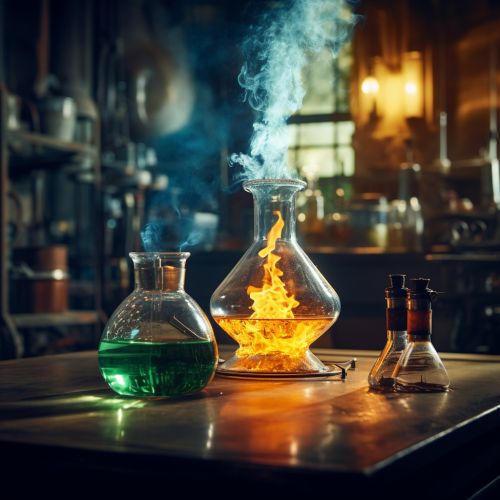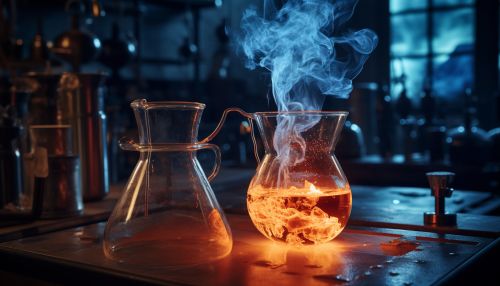Exothermic reactions
Introduction
An exothermic reaction is a chemical reaction that releases energy by light or heat. This is the opposite of an endothermic reaction. Expressed in a chemical equation, reactants turn into products plus energy.


Overview
Exothermic reactions may occur in a solution, usually producing heat, but also light, sound, or electricity. Combustion reactions are one example of this type of reaction. Exothermic reactions are used in everyday life in various applications such as in cars, self-heating cans, and hand warmers.
Energy Transfer in Exothermic Reactions
In an exothermic reaction, energy is transferred to the surroundings, usually in the form of heat, but also as light, sound, or electrical energy. This energy transfer can be tracked as part of the system's energy changes. The energy stored in the chemical bonds of the reactants is greater than the energy stored in the bonds of the products.
Examples of Exothermic Reactions
There are many examples of exothermic reactions that occur in our daily life. Some of these include combustion reactions, neutralization reactions, and many precipitation reactions.
Combustion Reactions
Combustion reactions are a type of exothermic reaction. In a combustion reaction, a substance reacts with oxygen to produce heat and light. The burning of natural gas in a furnace or a gas stove is an example of a combustion reaction.
Neutralization Reactions
In a neutralization reaction, an acid reacts with a base to produce a salt and water. This type of reaction is exothermic, releasing energy in the form of heat. An example of a neutralization reaction is the reaction of hydrochloric acid with sodium hydroxide to produce sodium chloride and water.
Precipitation Reactions
A precipitation reaction is an exothermic reaction where two soluble salts in solution combine to form a solid salt that precipitates out of the solution. An example of a precipitation reaction is the reaction of silver nitrate with sodium chloride to form silver chloride and sodium nitrate.
Factors Affecting Exothermic Reactions
Several factors can affect the rate and extent of exothermic reactions. These include the concentration of the reactants, the presence of a catalyst, temperature, and pressure.
Concentration of Reactants
The concentration of reactants can greatly affect the rate of an exothermic reaction. As the concentration of the reactants increases, the rate of reaction also increases.
Presence of a Catalyst
A catalyst can also affect the rate of an exothermic reaction. Catalysts work by lowering the activation energy of the reaction, allowing it to proceed at a faster rate.
Temperature
Temperature can also affect the rate of an exothermic reaction. Increasing the temperature increases the kinetic energy of the particles, which can increase the rate of reaction.
Pressure
Pressure can also affect the rate of an exothermic reaction. Increasing the pressure can increase the rate of reaction by increasing the concentration of the reactants.
Applications of Exothermic Reactions
Exothermic reactions have many applications in everyday life and in industry. These include heating homes, powering cars, and producing electricity.
Heating Homes
The combustion of natural gas in furnaces is an exothermic reaction that is used to heat homes. The heat produced by the reaction is transferred to the air in the home, raising its temperature.
Powering Cars
The combustion of gasoline in car engines is another example of an exothermic reaction. The energy released by the reaction is used to move the car.
Producing Electricity
Exothermic reactions are also used in the production of electricity. For example, in a coal-fired power plant, the combustion of coal is an exothermic reaction that produces heat. This heat is used to produce steam, which drives a turbine to generate electricity.
